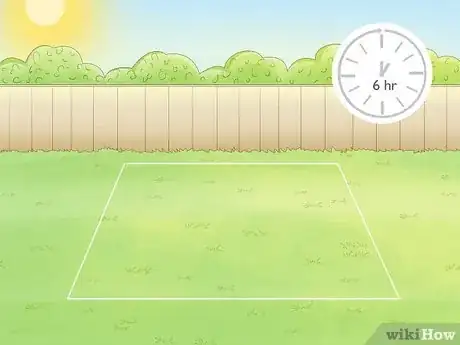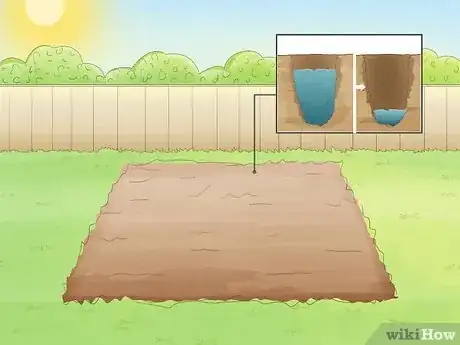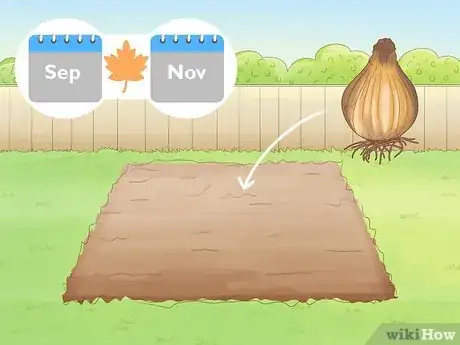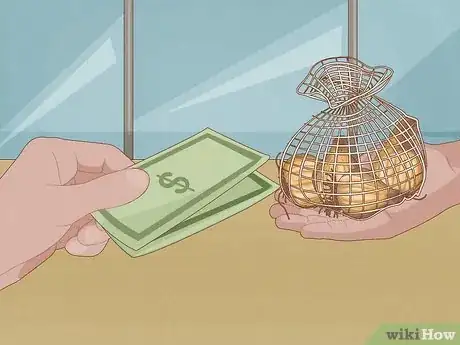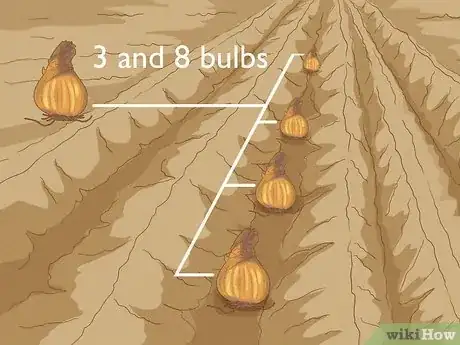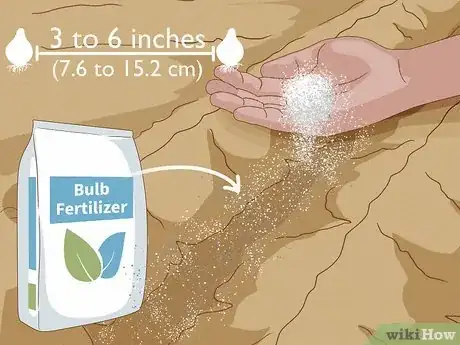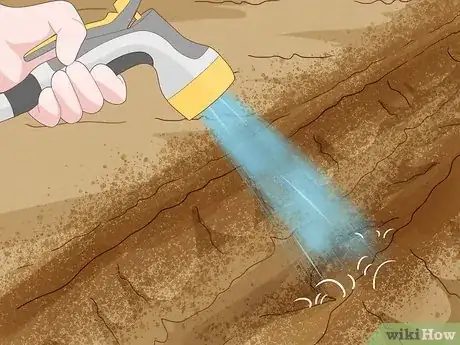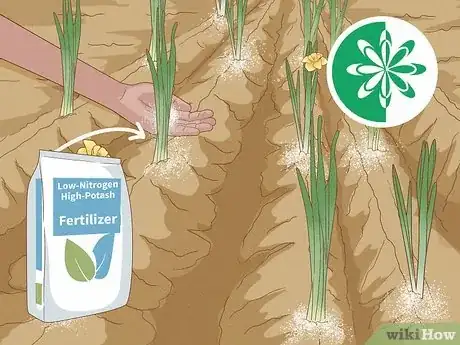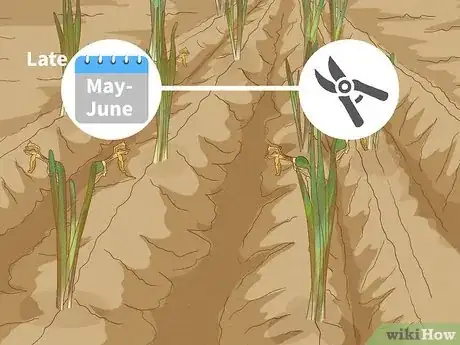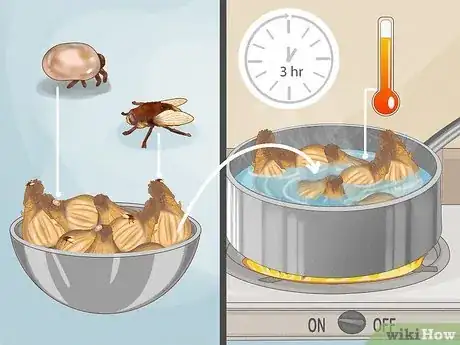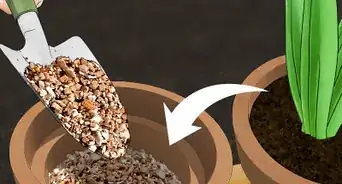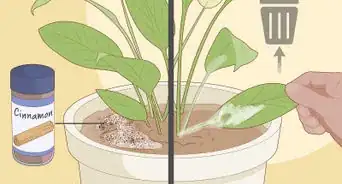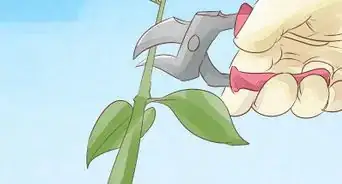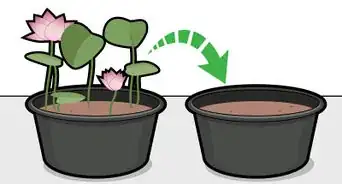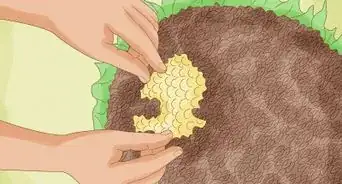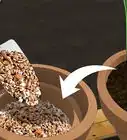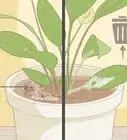This article was co-authored by Maggie Moran. Maggie Moran is a Professional Gardener in Pennsylvania.
There are 7 references cited in this article, which can be found at the bottom of the page.
This article has been viewed 98,728 times.
Usually bright yellow or dazzling white, daffodils are stunning, unique flowers that are surprisingly easy to grow. With a little effort and a few simple tricks, you can have a garden full of daffodils -- a sure sign of spring!
Steps
Preparing Your Patch
-
1Pick a site with full sun. Daffodils grow best in full sunlight, however, partial or light shade is also acceptable. Full shade will keep your daffodils from blooming for the first year or two after planting.[1]
-
2Check that your garden has fertile, well-drained soil. Daffodils can grow in many different types of soil, but the ideal soil for daffodil growing is moderately fertile and well drained. Some specialty daffodils prefer alkaline soils, so if you’re going for a particular daffodil breed, consult your nursery for more information.[2]Advertisement
-
3Plant the daffodils in the fall. Daffodils should be planted in the fall, preferably in October. However, you can plant as early as September or as late as November. If you live in colder climates, aim to start your planting 2 to 4 weeks before the ground freezes.[3]
-
4Buy the bulbs when you’re ready to plant. Buy your bulbs from a reputable source or nursery, and plant them within a week of purchasing. The larger the bulb, the better. Do not buy bargain bulbs, as they might not have a flower in them.
- Never buy or plant a soft daffodil bulb, as that means there is rot or another disease inside the bulb.
- Bulbs with two tips will produce two stems.
- Small bulbs may not flower in their first year.[4]
Planting the Bulbs
-
1Dig holes or trenches for the bulbs. You can, of course, plant each bulb individually, but most gardeners plant trenches of between 3 and 8 bulbs at a time. Feel free to create trenches of whatever shape you want: straight and long trenches create an orderly garden, while more circular clumps produce a more “natural” look.[5]
-
2Give the bulbs the right conditions to grow. Scatter a small handful of bulb fertilizer in each hole or trench, and make sure you properly space your bulbs. Whether you’re planting individual bulbs or trenches, daffodils should be planted 3 to 6 inches (7.6 to 15.2 cm) apart.[6]
- Only plant one type of daffodil per hole or trench.
-
3Plant the bulbs. Bulbs should be planted three or four times their depth. For small daffodils like Tete a Tete, aim for 4 inches (10 cm), for larger breeds like Carlton and King Alfred, aim for 6 inches (15 cm) deep.[7] Make sure you put the pointed end facing up.
- In places with severe winters, ensure at least 3 inches (7.6 cm) of soil covers the bulbs![8]
- If you can’t tell which end is “up,” plant the bulb on its side.
-
4Cover the bulbs and water them immediately after planting. Keep the area moist during the duration of the growth, until about three weeks after blooming time. Stop watering once the flowers have been in bloom for three weeks.[9]
-
5Leave the area alone. Even though daffodils form roots in the autumn and develop foliage in winter in select regions, buds and flowers will not show up until spring. Trust that your daffodils are hard at work, and leave the area alone so they can grow well.
Caring for the Flowers
-
1Fertilize bulbs if necessary. If your bulbs are not performing well in spring, give them a low-nitrogen, high-potash fertilizer.[10] Remember that your first year might not yield great results, but ask your nursery or consider replanting if this is a continual problem.
-
2Avoid cutting too many flowers. While you can of course cut daffodils to bring inside or sell to others, bear in mind that cutting too many may jeopardize the bulb growth for future years.
- Do not place daffodils in the same vase as other flowers. Daffodil sap causes other flowers to wilt.[11]
-
3Let the plants fully die before pruning. Only remove foliage once it has yellowed or dried up. Removing foliage early could jeopardize the subsequent year’s growth.
- To be safe, don’t start pruning until late May or June.[12]
-
4Protect your plants from pests and disease. Small and large narcissus flies as well as bulb mites are the most common pests to affect the daffodil. If you see these pests or if your bulbs feel soft to the touch, place the bulbs in nearly boiling water for up to three hours (called a hot water treatment).
- Yellow spots on the stems or leaves may indicate Stem Nematodes. Destroy all the infected plants, and then do a hot water treatment.
- Treat fungal diseases such as rot and mildew with a fungicide spray, and treat viral diseases, such as the yellow stripe virus, with an insecticide spray or the hot water treatment.
Expert Q&A
Did you know you can get expert answers for this article?
Unlock expert answers by supporting wikiHow
-
QuestionCan you plant daffodils now?
 Maggie MoranMaggie Moran is a Professional Gardener in Pennsylvania.
Maggie MoranMaggie Moran is a Professional Gardener in Pennsylvania.
Home & Garden Specialist
-
QuestionWhat is the best month to plant daffodil bulbs?
 Maggie MoranMaggie Moran is a Professional Gardener in Pennsylvania.
Maggie MoranMaggie Moran is a Professional Gardener in Pennsylvania.
Home & Garden Specialist
-
QuestionHow do you plant daffodils bulbs?
 Maggie MoranMaggie Moran is a Professional Gardener in Pennsylvania.
Maggie MoranMaggie Moran is a Professional Gardener in Pennsylvania.
Home & Garden Specialist
References
- ↑ https://www.easytogrowbulbs.com/pages/daffodils-planting-guide
- ↑ http://www.vanmeuwen.com/daffodils-top-ten-tips
- ↑ https://www.almanac.com/plant/daffodils
- ↑ http://www.telegraph.co.uk/gardening/problem-solving/top-tips-for-planting-bulbs/
- ↑ http://davesgarden.com/guides/articles/view/1415/
- ↑ http://www.express.co.uk/life-style/garden/650443/How-to-grow-daffodils
- ↑ http://www.express.co.uk/life-style/garden/650443/How-to-grow-daffodils
- ↑ https://www.almanac.com/plant/daffodils
- ↑ http://daffodilusa.org/growing-daffodils/guidelines-for-growing-daffodils/
About This Article
To plant daffodils, wait until the fall and then find a sunny spot in your garden that has well-draining soil. Then, dig holes or trenches that are 3-4 times as deep as your daffodil bulbs. After you've dug the holes or trenches, sprinkle some bulb fertilizer in the bottom of them so your daffodils grow healthy and strong. Next, bury your bulbs in the ground and immediately water them so the soil is moist. Once your bulbs are planted, just wait until spring for them to bloom! To learn more from our Horticulturist co-author, like how to care for your flowers once they sprout, keep reading the article!
